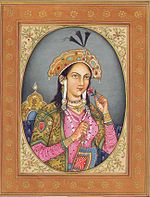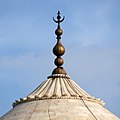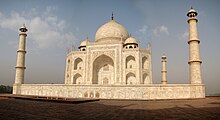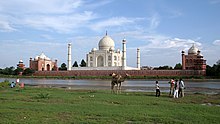Egypt:
Egypt it one of the most culturally rich countries in the world and one of the most ancient tourist spots in the world having played host to many visitors from ancient Greece and Rome. Of course the site that is most synonymous with the image of Egypt is the Great Pyramid and the Sphinx at Giza. Other must see sights include the Valley of the Kings, Abu Simbel, the Egyptian Museum, Saqqara, Luxor and Karnak.

Giza:
THE ENIGMATIC PYRAMIDS
The Pyramids of Giza are the most famous monuments of ancient Egypt. These massive stone structures were built around 4500 years ago on a rocky desert plateau close to the Nile. But the intriguing Egyptian pyramids were more than just tombs for kings. The mysteries surrounding their symbolism, design and purpose have inspired passionate debate. It is likely that many of these mysteries will never be solved...
What was the purpose of the Egyptian pyramids?
The people of ancient Egypt believed that death on Earth was the start of a journey to the next world. The embalmed body of the king was entombed underneath or within the pyramid to protect it and allow his transformation and ascension to the afterlife, and a place among the gods.
Each of the Giza Pyramids formed part of a pyramid complex that included an adjoining mortuary temple where rituals for the dead king and for the Egyptian gods may have been carried out. A causeway ran to a lower temple near the Nile floodplain that acted as an entrance to the complex. The complex around the Great Pyramid of Khufu also included three minor pyramids for his queens, pits for funerary boats and numerous mastaba tombs for the royal family and officials.

Unfortunately, pyramids became obvious targets for tomb robbers. The Giza Pyramids were plundered long ago of bodies and anything entombed with them, despite the almost superhuman efforts of the Egyptians to protect the remains of their kings.

This place has taken human kind to life beyond death with its Tombs, and their mythologies and with books of death and book of Pharaoh. Seen movie ‘The Mummy’ which stared Brandon Fraser, for real experience go to Egypt for the ultimate tour and voyage through the river Nile. Egyptian Explore the tombs of famous leaders of ancient times from pharaoh Ramses and female pharaoh Hatsheput. Worship their Sun god Ra, see the engineering marvel of Great Pyramids and Egyptian art which reflects the grandeur.

The Great Sphinx in front of the Pyramid of Khafre. The age and purpose of the Sphinx are debated, but it was probably part of Khafre's Pyramid complex.
One of several cedarwood boats buried close to the Great Pyramid of Khufu. They may have been used during Khufu's funeral, or intended as solar boats to transport the king in the afterlife.

Inside the Great Pyramid of Khufu:
From an entrance just above the base of the Great Pyramid, a cramped Ascending Passage climbs for 36 meters up through the solid stone core to a towering Grand Gallery. This climbs another 46 meters to reach the King's Chamber and an empty sarcophagus in the heart of this colossal pyramid. The enormous weight that bears down on the King's Chamber is dissipated by a series of ingenious stress-relieving chambers and massive granite beams built above it.


The King's Chamber in the heart of the Great Pyramid holds an empty stone sarcophagus.

The sarcophagus in the King's Chamber was fashioned from a single piece of red granite. The stark chamber was walled by huge blocks of the same stone. We will never know whether Khufu or anyone else was really entombed here. Despite efforts of the ancient Egyptians to seal the sacred chamber, it was probably violated and robbed even before the end of the Old Kingdom.
The Taj Mahal

In 1631, Shah Jahan, emperor during the Mughal empire's period of greatest prosperity, was grief-stricken when his third wife, Mumtaz Mahal, died during the birth of their 14th child, Gauhara Begum.Construction of the Taj Mahal began in 1632. The court chronicles of Shah Jahan's grief illustrate the love story traditionally held as an inspiration for Taj Mahal. The principal mausoleum was completed in 1648 and the surrounding buildings and garden were finished five years later. Emperor Shah Jahan himself described the Taj in these words:
"Should guilty seek asylum here,
Like one pardoned, he becomes free from sin.
Should a sinner make his way to this mansion,
All his past sins are to be washed away.
The sight of this mansion creates sorrowing sighs;
And the sun and the moon shed tears from their eyes.
In this world this edifice has been made;
To display thereby the creator's glory."


View From East The Taj Mahal seen from the banks of river.
Interior decoration
The interior chamber of the Taj Mahal steps far beyond traditional decorative elements. Here, the inlay work is not pietra dura, but a lapidary of precious and semiprecious gemstones. The inner chamber is an octagon with the design allowing for entry from each face, although only the door facing the garden to the south is used.


The Taj Mahal

The Taj Mahal is a white Marble mausoleum located in Agra, India. It was built by Mughal emperor Shah Jahan in memory of his third wife, Mumtaz Mahal. The Taj Mahal is widely recognized as "the jewel of Muslim art in India and one of the universally admired masterpieces of the world's heritage."
Taj Mahal is the finest example of Mughal architecture, a style that combines elements from Persian, Turkish and Indian architectural styles.
"Should guilty seek asylum here,
Like one pardoned, he becomes free from sin.
Should a sinner make his way to this mansion,
All his past sins are to be washed away.
The sight of this mansion creates sorrowing sighs;
And the sun and the moon shed tears from their eyes.
In this world this edifice has been made;
To display thereby the creator's glory."


Shah Jahan, who commissioned the Taj Mahal -"Shah jahan on a globe" from the Smithsonian Institution
Artistic depiction of Mumtaz Mahal
The tomb
The tomb is the central focus of the entire complex of the Taj Mahal. This large, white marble structure stands on a square plinth and consists of a symmetrical building with an iwan (an arch-shaped doorway) topped by a large dome and finial. Like most Mughal tombs, the basic elements are Persian in origin.
View From East The Taj Mahal seen from the banks of river.
Interior decoration
The interior chamber of the Taj Mahal steps far beyond traditional decorative elements. Here, the inlay work is not pietra dura, but a lapidary of precious and semiprecious gemstones. The inner chamber is an octagon with the design allowing for entry from each face, although only the door facing the garden to the south is used.





